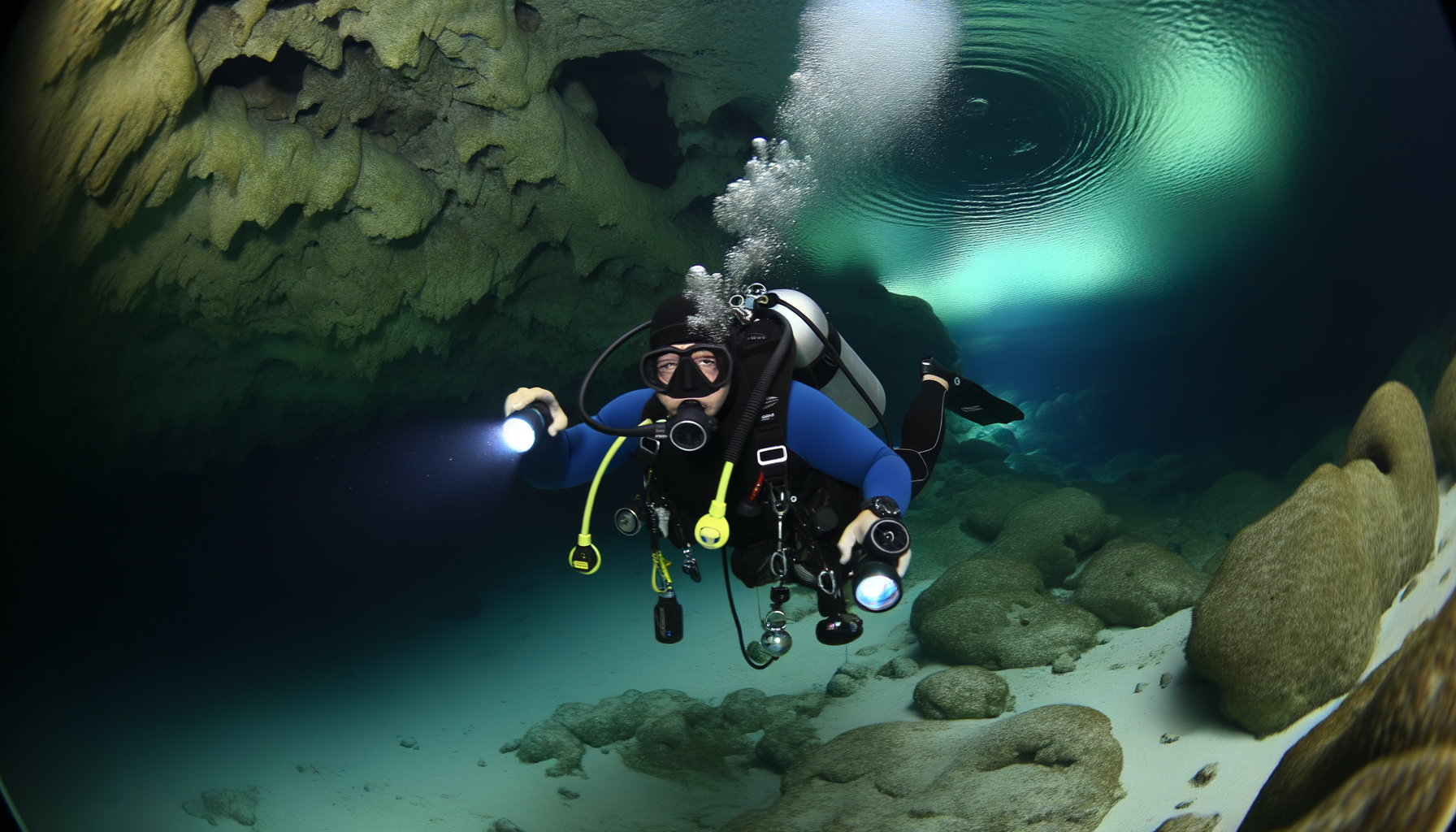
Cave diving is a specialized form of underwater exploration that takes adventurers into the depths of submerged caves, far beyond the reach of natural light. Unlike cavern diving, which occurs at the cave’s entrance within sight of daylight, cave diving can lead miles into the earth, requiring a high level of skill, experience, and specialized equipment. The sport is not for the faint-hearted, with only about 75 professionals worldwide, and is often pursued for scientific research or rescue missions.
The dangers associated with cave diving are significant, including the risk of getting lost, running out of air, or equipment failure. Divers undergo rigorous training to handle these extreme situations, learning to navigate in complete darkness and relying heavily on a guideline to find their way back to the cave entrance. Specialized terms such as ‘spring’ and ‘sump’ refer to the different types of cave diving environments, with springs offering clearer water conditions and sumps presenting more challenging, murky waters with low visibility.
Aspiring cave divers must first complete an Advanced Open Water course and additional training in cavern diving and night diving before embarking on cave diving courses. Knowledge of different cave types, like littoral, coral, lava tubes, and solution caves, is essential, as is mastery of various propulsion techniques to avoid disturbing the cave’s silt bed. The equipment for cave diving is also highly specialized, including dual-valve systems, reconfigured scuba gear to minimize entanglement risks, and multiple lights to navigate the darkness of underwater caves.
The allure of cave diving lies in the thrill of exploration and the chance to discover places unseen by human eyes. Despite the inherent risks, for those with the right temperament and dedication to continual training, cave diving offers a unique opportunity to push the limits of adventure in some of the planet’s last uncharted territories.



